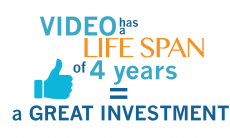Gating content —requiring site visitors to provide their email address or other information before they can access or download the information— is a critical part of the conent marketing equation. Here are some tips and tricks for getting gating right.
Before we dive into the nitty-gritty of gating content, let’s take a step back and recall that the purpose of gating content is to help you establish and strengthen relationships with your prospects. Doing so requires that you provide information of value, of course, but also that you provide at least some value without restriction. In other words, you have to attract your audience before you can ask them to engage more deeply.
In the process, you’ll be setting expectations and it’s critical that your content live up to the expectations you’ve set.
Provide Real Value
So that’s our first rule: if you promise real value, provide real value. Nothing will turn a prospect off –permanently in many cases – more quickly than feeling that they’ve been misled. Anything that sounds, looks, or smells like a “bait and switch” will send your audience running for the hills. Just don’t do it.
The Goldilocks Effect
As you no doubt know, the more information you ask for in your gating process, the more people will opt not to continue, regardless of how promising your content sounds.
Finding the right balance between asking for no information –which is a smart approach in some instances but which limits your ability to nurture the relationship – and asking for everything up to and including bankrouting information can be tricky.
This is where a solid testing plan can help. Use A/B testing tools and other tests to find the right balance. When in doubt, ask for less and build relationships slowly.
But it’s not just about striking the right balance. It’s about timing and what you ask for as much as how much you ask for it.
Timing
We alluded to the timing issue earlier. You have to attract your target audience, provide value, and demonstrate that you’re trustworthy enough to share information with. Ask for information before you’ve let your prospects get to know you and you’re just another spammer.
What You Ask For
You don’t need my social security number if I’m your prospect. That should be obvious. But do you really need my phone number? Do you really think your prospect wants to let you decide when they need to answer their phone?
Maybe. That really depends on the market and what you’re marketing. Mostly, though, you want to ask questions that can help you better understand what motivates a prospect so you can tailor subsequent contact and content to their needs. This is particularly true for early stage prospects.
Building On What You Know
Finally, consider how you ask for additional information as you learn more about your prospect. Don’t ask for the same piece of information twice. Use progressive profiling tools to build a picture of prospects individually and prepopulate forms with the basics, like an email address, that you’ve already gathered. (Be sure you stay on the right side of privacy regulations when you use these tools.)
Obviously, getting content gating right is an exercise in balancing the needs of all parties involved. Just keep in mind that if your prospects needs aren’t considered first, they’re less likely to give you the permission you seek.







